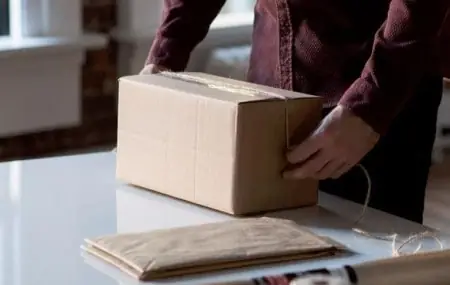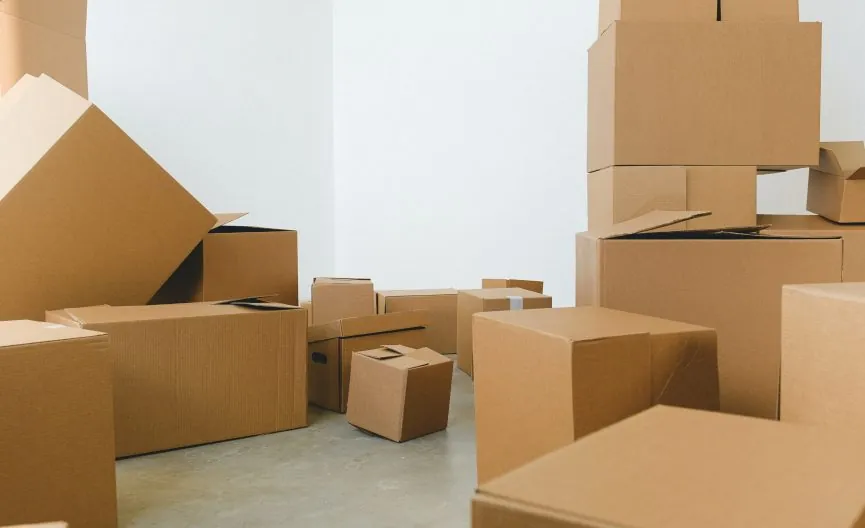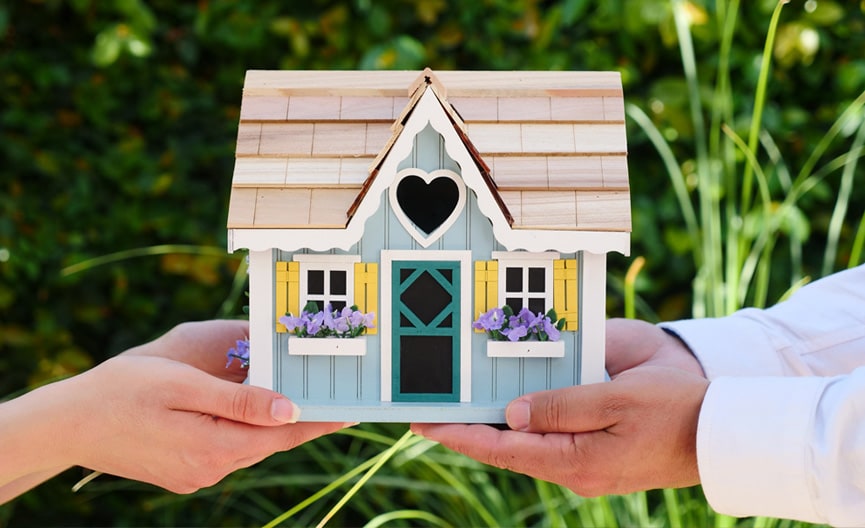When it comes to shipping, storage or moving house, you can’t go wrong with a cardboard box. But when were cardboard boxes invented, and how did cardboard become one of the most useful materials of the last few centuries?
Together, we’ll go through the history of cardboard, its many forms and uses, and where you can get some sturdy cardboard boxes for your next big project.

When was cardboard invented?
When cardboard was invented really depends on how you categorise “cardboard”. Are you referring to the tough, brown board we use today or are you taking into consideration its origins in paper pulp and fabric count?
Depending on your perspective, cardboard was either invented at some point in the 19th century or as far back as 105 CE, being invented in either China, Germany or the UK.
China’s role in the history of cardboard
China, 105 CE
In 105CE, a Chinese official by the name of Ts’ai Lun – formally 蔡伦, or Cai Lun – announced the invention of a brand-new style of paper created using pulp, fishnets, hemp waste and rags. This marked the beginning of the mash-water-sieve method of creating paper, a process so effective we still use it today. That’s a 2,000 year old legacy!
China, 15-1600 CE
The papery origins of cardboard toughened up somewhere between the 16th and 17th centuries, depending on who you ask. The general consensus is that it happened in China, where the sturdy fabric-adjacent material was probably used to package and ship trade goods down the silk road to Europe.
Germany’s possible role in the history of cardboard
Germany, 1817 CE
Now, this one’s a bit harder to verify. A book from 2006 called Exploring Package Design by Chuck Groth claims that the very first cardboard box in circulation was built in 1817 for a board game called ‘the Game of Besieging‘. Unlike cardboard itself, the claim is a one-source wonder – make of it what you will!
England’s slightly stronger claim
England, 1817 CE
The most well-documented claim to cardboard fame is a breakthrough made by M. Treverton & Son in England, 1817. They are the people who are most likely to have invented the cardboard box itself.
The box that M. Treverton created was made of simple paperboard folded into a container and used to house what we can only guess was a bunch of loose items. A simple solution to a simple problem!
What global literature says…
Using the Google Books Ngram Viewer, we chose to run a quick search to see when the term, ‘cardboard box’, really started to crop up in popular culture.
We found that books first began to talk about cardboard boxes as early as 1827, with references spiking across literature in the late 1820s and the early 1830s.
As for the sources, we can only make educated guesses at this point. Were the Game of Besieging and M. Treverton’s paperboard box finally hitting the printing press?
The role of the United States in making cardboard widespread
In 1879, Scot-born Robert Gair entered the cardboard scene. Headlining factory innovation in the late 19th century, Gair is famous for his ingenious machines that paved the way to packaging production lines across the globe.
After human error caused the loss of over 20,000 paper bags at one of his factories, Gair put his pen to the drawing board to design a machine that could punch, cut and crease cardboard all in one go.
When was corrugated cardboard invented?
The invention of corrugated cardboard is far simpler to pin down, since it follows two 19th century patents that are well-documented in both UK and US law.
An English patent was issued to Edward G. Healy and Edward E. Allen in 1856, protecting their claim to a hand machine used to fold a special kind of pleated paper. This paper was firm, wavy and designed to be sewn inside top hats to help make them more comfortable to wear.
15 years later in New York, Albert Jones was awarded the patent for the packaging-exclusive use of corrugated paperboard. His style of one-sided corrugation was the foundation for other inventors, companies and production lines to start developing new kinds of corrugation, from double-faced to triple wallboard.
So…who definitely invented cardboard?
Truly, it depends! Does the invention of cardboard refer to paperboard? If it does, what is the line between paperboard and paper? Should we categorise cardboard as corrugated, and ignore the centuries of innovation that led us up to that point?
In truth, every single tool that humans have used throughout history has been preceded by years of breakthroughs made by hundreds of different people. No one person or country can take full credit for cardboard.
How is cardboard made?
Wood – cardboard’s base material – consists largely of fibrous cellulose, useful for maintaining the sturdy shape of a tree.
This fibre can be extracted from the wood by breaking it down and pulping it, with its structural integrity making it the perfect component to reform into new materials.
At a basic level, that’s how cardboard is made – but let’s go into a bit more detail.
Step 1: Sourcing from softwood trees
Cardboard is sourced from softwood trees such as loblolly pines and firs. The cellulose in these trees sports a long, firm fibre, perfect for creating sturdy board.
Depending on the arrangements made between lumber mills and papermakers, cardboard can be sourced from tree farms or from woodchip offcuts and shavings. That’s how sustainable cardboard is sourced – a no-waste approach that takes unwanted materials from other industries.
Step 2: Extracting the raw materials
In order to be reshaped into something new, the fibres of the wood need to be broken down and extracted. This is done through a process called ‘pulping’ – remember the invention of Ts’ai Lun?
In the same way that paper has been pulped since 105 CE, wood chips need to be broken down – or ‘digested’ – to pull out the cellulose fibres.
The process of digestion is called chemical pulping, where the wood is mixed with sulphite to dissolve the lignins holding it together. The wood is dropped into a solution of sulphite (or kraft) and cooked at a minimum temperature of 155°C. Once the lignite has dissolved, machines wash it away with water, leaving only wood fibre behind.
Step 3: Creating something new
The fibres are then placed into a machine that beats them with various chemicals, combining the fibres to create paper of a certain quality and strength.
When it comes to cardboard, the pulp is often mixed with a natural polymer such as starch in order to stiffen up the final product. The pulp is then squeezed out through a press and steamed to remove excess water, leaving us with the final product – cardboard!
Cardboard Boxes: A timeless solution to a timeless problem
At Attic Self Storage, we have every cardboard box you could ever need: small ones, large ones, medium ones, shoe boxes, wardrobe boxes, TV boxes and frame packs – anything you need to store, we’ve got the solution.
If you’re packing up at one of our self storage locations, you can take a quick walk down the hall and browse the range of cardboard boxes we have available.




